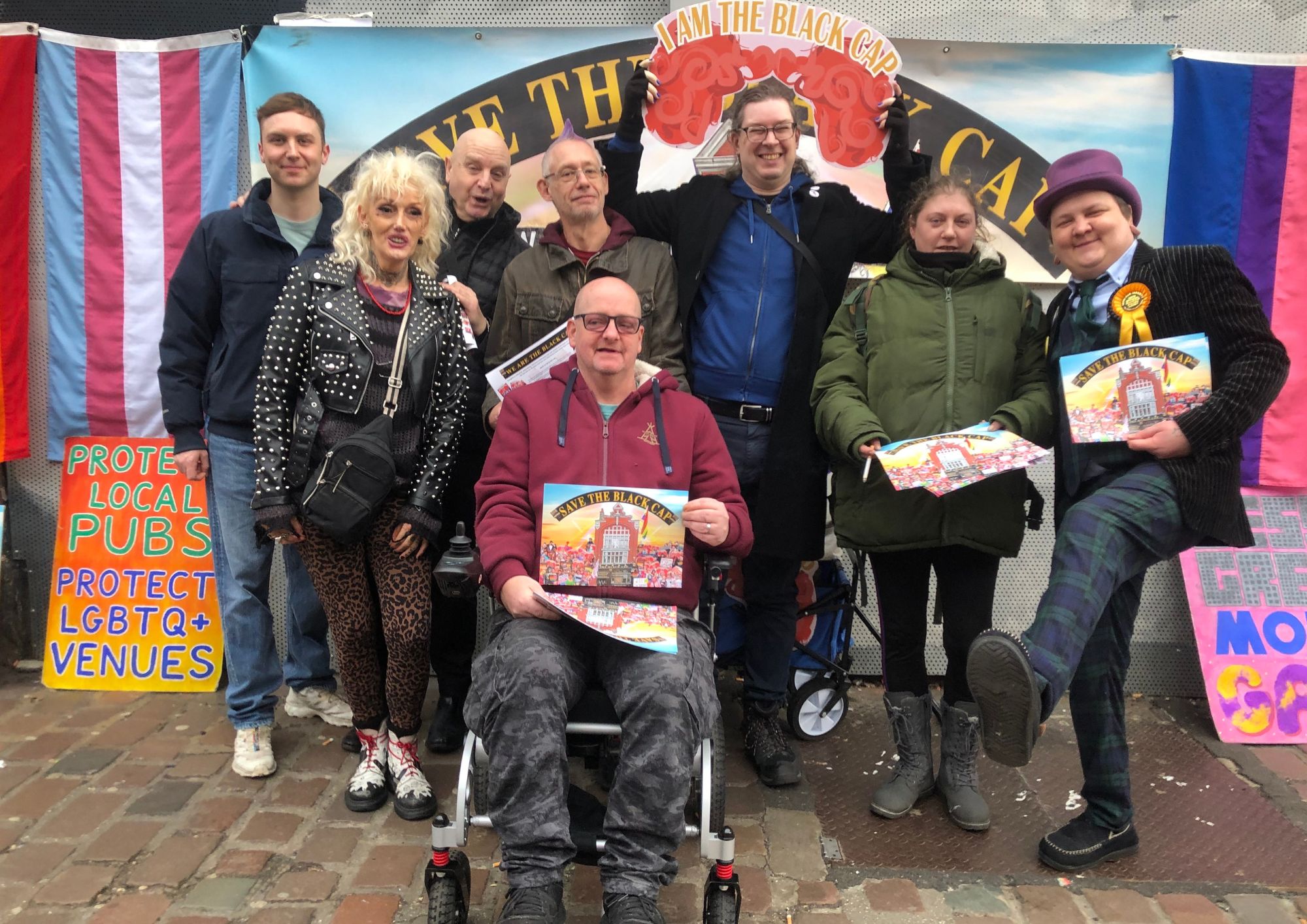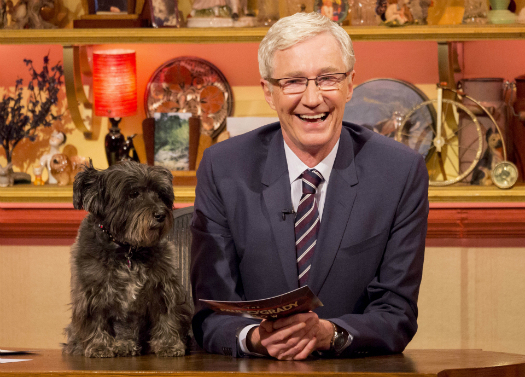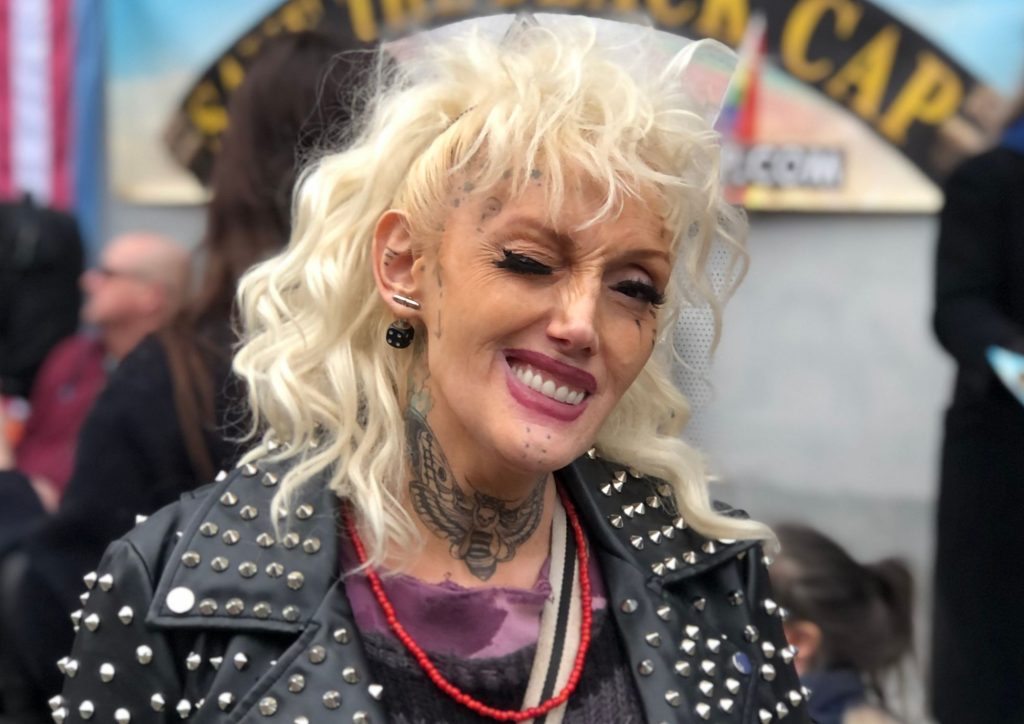Help us celebrate the amazing history of The Black Cap
Ten year fight to see cabaret bar reopened closes in on victory
Thursday, 8th February

Campaigners are close to getting the famous venue reopened
A NEW history project to discover and share the stories of the famous Black Cap pub in Camden Town is launched today (Thursday).
In collaboration with the New Journal, the Save The Black Cap campaign are looking for people who have memories and stories to share about the cabaret venue and LGBT+ landmark.
Cabaret star Alex Green has been the cornerstone of the 10-year campaign to get the Cap re-opened – a campaign that looks to have been successful as new owners have applied to re-open the Cap as a gay venue.
He said: “As older LGBTQ people have stories that might be lost, it is important to remember lives that were led before us and stand on their shoulders, too.Because oppressive laws that banned being gay were only overturned in 1967 – and legislation such as Clause 28 continued to legalise homophobia – vital personal histories have not been told.
“It is important, because we were not allowed our own history. Up to 1967, you could not share your life without getting into trouble – and that isn’t very long ago.
“It is getting to the point that a generation needs to share what they faced before it is lost, and the LGBTQ history month is vital to mark it.”
The history project will mark the Cap’s role in a marginalised and threatened community.
Mr Green said: “We know of martyrs like Alan Turing or Oscar Wilde, of people being persecuted and prosecuted. Of course we need to remember that – but we have to remember people who had good lives too, people who managed to lead normal lives under an awful gay apartheid.”
It was the early 1960s when the Cap became a focus for cabaret and drag acts, and developed as a gay pub – but beers had been served on the site since at least 1751. Where the name comes from is open to debate: some say it is linked to the legend of a witch called Jinny Bingham, while it has also been linked to a black piece of cloth a judge would place on his wig when sentencing someone to death.
A Victorian tiled mural inside the Cap shows a witch and several unconscious men, with a gallows outside. It was around the 1870s that the former pub was demolished and the Cap we know today was built. Dracula author Bram Stoker described the pub being advertised by a hand-painted sign that featured a “fearsome portrait of a lady of dark headgear, with a face typical of all sins of the Decalogue”.
In the Edwardian period, the Black Cap sold bottles of spirits as a distillery but it was in the 1960s that it became both a haven and a stage. Top names who graced the Cap included Mrs Shufflewick, Danny la Rue, and Hinge & Bracket. In September 1978 a Camden Council social worker called Paul O’Grady dressed up as Lily Savage and a star was born.

The late Paul O’Grady
In the 1980s, the legend of Regina Fong – known as as “The Last of the Romanoffs” – made the Cap their home, to be joined by the likes of the Trollettes, Adrella, Julian Clary, Titti la Camp, and Dave Lynn.
Dave’s unlikely Drag Act stage name came about through first night nerves at The Cap.
He recalled: “I was so nervous it didn’t occur to me to have a name. I got a friend to do the make-up, I borrowed stuff from my mum to wear. The name hadn’t occurred to me. When the host said to me, ‘What’s your name?’ I went, ‘Dave’. That was it.”
In the 1960s, it was a haven, a safe space in a world where homophobia was rife, and violence against gay people was frequent.
Mr Green said: “Right up until it closed, it was seen by many local women (straight and cis as well as lesbian, bi, and trans) as the one pub or nightclub where they knew they wouldn’t get any hassle.”
In 2012, then owners Faucett Inn unveiled plans to improve the venue that were opposed by the pub’s supporters. It was later listed as an Asset of Community Value and a flats plan was thrown out in February 2015 at the Town Hall. It has been closed ever since.
During the campaign against the building being used for flats, Mr O’Grady told the New Journal: “I hope whoever moves in there is haunted by the ghosts of all the old drag queens who used to perform there. “So if you wake up in the night and you find Mrs Shufflewick and Regina Fong at the bottom of your bed, it serves you right.”
To contribute to the Black Cap History and Future Project, email dcarrier@camdennewjournal.co.uk
‘Black Cap reminded me of a Labour Club’
PERFORMER and activist Alex Green has been a mainstay of the campaign to get the Black Cap pub open.
He said: “I came to London aged 19. I had been to a couple of gay places in Leeds but they did not feel particularly vibrant. I moved here, and the Cap was the nearest pub. I was fully out by then – it was the 1980s – but I had never really been in a gay scene.”

Alex Green
There was something special in the air that set the place apart from other venues, he recalled, and it reminded him of another place at the heart of a community he would visit as a child.
“There were couples in corners, a trans person at the bar, people of colour, lesbians. It was a wonderful mix,” he said.
“It reminded me of the Labour Club I would go to with my family back in Yorkshire when I was a kid. It was where people did their weddings, their funerals, all the family dos and with wonderful acts who would perform, comedians and singers on the circuit.” The Cap filled a similar role.
“Going into the Cap felt like that, for me and my queer family and friends. It became the place we would meet when we needed to get together. We’d have professors and politicians in, with singers and dancers and the whole gamut of people. It welcomed gay people bringing in members of the straight community. It helped people understand differences and similarities.”
‘I felt at home’
PROFESSIONAL dancer Deanna Jade Bierman moved to London in the mid-90s and found work performing for Michael Jackson and Madonna.
When she wasn’t on tour, Deanna danced in clubs in Soho and performed Burlesque shows.
“I fell into a scene and the people I hung out with were either gay, or drag queens, or dancers. It meant I gravitated to Camden and I found places that suited me. The first time I came here I felt I was home. It made people feel like that. It was always brilliant, every night of the week. It had the best Monday night in the country,” she said.

Deanna Jade Bierman
“When you walked in, you never really left. It gave you that vibe, got right into your heart. It helped put and keep Camden Town on the map, and not just as a place to come and perform. It was very much part of the NW1 culture. Everyone could walk in and it had a genuinely wide appeal. It created a sense of being one big family, a place where no matter who you were, you belonged.
“Anyone with any counterculture lifestyle knew it was there for us. The history of this building must be honoured and respected. It wasn’t only for the underdogs and the black sheep, though it certainly was. Everyone could come in through the door and feel welcome “A counterculture society breeds empathy for others. That must not be underestimated.”
‘I fell in love with it’
JOSH Mallinson had been going to the Cap for more than 20 years.
“I first came to Camden Town as a young teenager with my mum and I fell in love with the place,” he said.
“I thought it was so cosmopolitan. The hubbub was incredible, full of New Wave and New Romantics. I turned 18 and I made friends here, especially in the punk and queer communities.”
But his first visit to the Cap came under unpleasant circumstances.
“I was supposed to be meeting some friends and sadly they had been scared away by some homophobic people shouting abuse,” he said. “I was in Mornington Crescent. I came out the Tube station and I got punched in the face twice. There were three lads and they chased me down the road, calling me a faggot and other homophobic terms.

Josh Mallinson
“I ran inside the pub, I had heard it was a safe space. I had a horrible cut on my eye from where they had punched me. I ran in and collapsed against the bar. It was an awful, awful experience. I couldn’t stop crying “I was looked after. They gave me water, put ice on my face and I stayed there recovering for the rest of the night.
“A month later, I came back to thank them for looking after me so kindly that night. I felt: here is a place I can got to in Camden Town that accepts my queerness, my gayness, but also with plenty of straight couples there too, and they all put their arms round me, they all reached out, they all said: ‘You’re OK’.”
